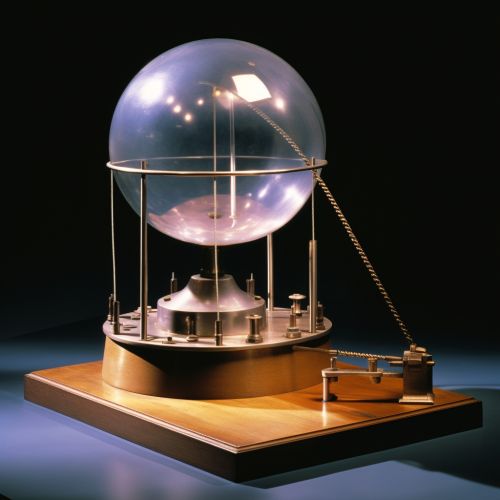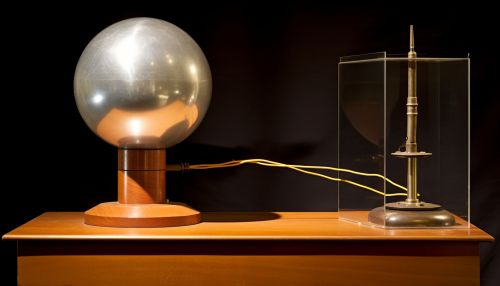Electrostatics
Introduction
Electrostatics is a branch of physics that deals with the phenomena and properties of stationary or slow-moving electric charges. It is a fundamental aspect of nature and is responsible for many natural and man-made phenomena. The study of electrostatics has led to many important discoveries and innovations in science and technology.


Fundamental Concepts
Electric Charge
The concept of electric charge is fundamental to electrostatics. It is a property of matter that causes it to experience a force when near other electrically charged matter. There are two types of electric charges: positive and negative. Like charges repel each other, while unlike charges attract.
Coulomb's Law
Coulomb's Law is a fundamental principle in electrostatics. It describes the force between two charged objects. The law states that the force between two charges is directly proportional to the product of their charges and inversely proportional to the square of the distance between them.
Electric Field
The electric field is a concept used to describe the space around a charged object in which another charged object would experience a force. The direction of the field at a point in space is the direction of the force that a positive test charge would experience if placed at that point.
Electric Potential
Electric potential, also known as electrostatic potential, is the amount of electric potential energy per unit charge at a specific location in an electric field. It is a scalar quantity and is measured in volts.
Electrostatic Phenomena
Electrostatic phenomena are common in nature and in everyday life. Some examples include lightning, static electricity, and the operation of capacitors in electronic devices.
Lightning
Lightning is a natural electrostatic discharge that occurs during a thunderstorm. The discharge occurs between electrically charged regions of a cloud, between two clouds, or between a cloud and the ground.
Static Electricity
Static electricity is a form of electricity that results from an imbalance of electric charges within or on the surface of a material. This imbalance of charges can be caused by certain materials coming into contact with each other and then separating.
Capacitors
Capacitors are devices used in electronic circuits to store electric charge. They are used in a variety of applications, including power supply filters, signal filters, and for energy storage.
Applications of Electrostatics
Electrostatics has many applications in science and technology. These include electrostatic generators, electrostatic precipitators, photocopiers, and laser printers.
Electrostatic Generators
Electrostatic generators, such as the Van de Graaff generator, are devices that produce very high voltages. They are used in particle accelerators and in some types of scientific research.
Electrostatic Precipitators
Electrostatic precipitators are devices used to remove particles, such as dust and smoke, from industrial exhaust gases. They work by giving the particles an electric charge and then using an electric field to separate them from the gas.
Photocopiers and Laser Printers
Electrostatics is also used in photocopiers and laser printers. These devices use static electricity to transfer toner (a type of ink powder) to the paper.
